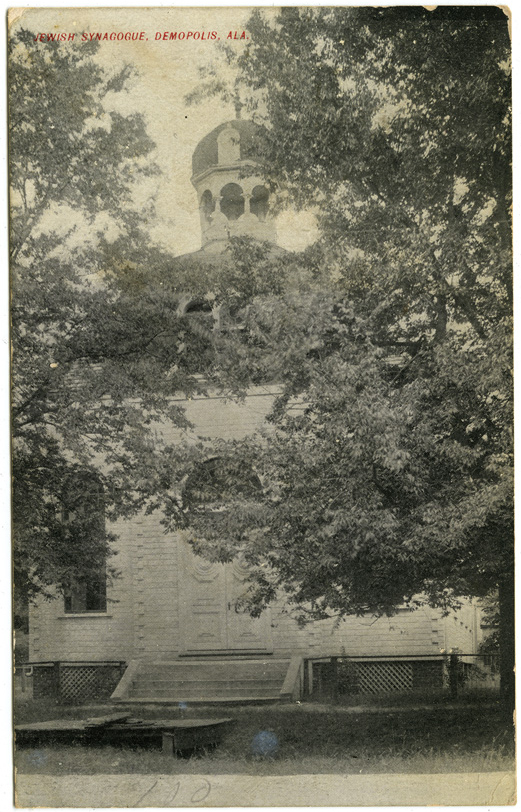3.6 Demopolis, Alabama
Congregation B’nai Jeshurun, 406 North Main Street, corner of Main and Monroe streets
Architect unknown, 1893
Bradford and Company, St. Joseph, Michigan, publisher; no date
This undated postcard shows the small but noteworthy synagogue of Congregation B’nai Jeshurun (Sons of Israel), built in 1893. The building may have been of brick, stone, or wood (it is difficult to be sure from the old photos), and it was marked by a mansard roof, with a front dome emerging from the roof, surmounted by an elegant open belvedere and cupola above the facade. In this view, where trees obscure much of the building, it is the cupola that is strikingly visible.
When built, the temple must have stood out as a local landmark. Other contemporary synagogues also had distinguishing upper–level features. The surviving synagogue in Corsicana, Texas, which has two towers with bulbous domes, is one such example. But the cupola of B’nai Jeshurun was removed at some point, perhaps after being damaged in a storm.
Besides its unusual roof, the building had other odd elements. It was designed with prominent buttresses visible on one side in an old photo, but almost certainly applied to both building flanks. This supports the idea that it was a masonry building. Perhaps, given the large size of the many arched windows, these buttresses were needed to stiffen the side walls so that they could carry the weight of the extra-large roof.

The congregation was established in Demopolis in 1858, making it the fourth–oldest Jewish congregation in Alabama. As was the norm for small communities, the group initially met in homes or in congregants’ places of business. The congregation bought land for a cemetery in 1878, but it took several decades before a permanent purpose-built synagogue was erected. Isaac Marx, the oldest living Jew at the dedication ceremony in 1893, lit the eternal light.
B’nai Jeshurun never had a full-time rabbi; services were led by a lay reader. By 1907, the congregation had joined the Union of American Hebrew Congregations, the national organization of Reform Judaism.
This synagogue was demolished after a new smaller building was built inside the older structure in 1958. The new temple was inactive by the 1980s, and the building title was transferred to a local church in 1989.
